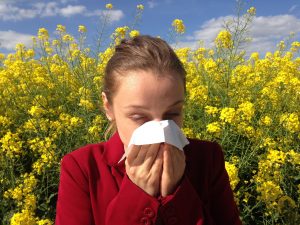
Rarely do we notice snot until it’s made us miserable. Whether it’s constantly running or clogging our sinuses so we feel we can’t breathe, this usually innocuous fluid can make or break our day. But we can’t just get rid of it entirely.
Mucus keeps you healthy by shielding your nose and lungs from irritants like dust and bacteria. It can also–to an extent–block out some cigarette smoke and exhaust fumes. Why, then, does it cause such misery when we get sick? And how can we tell the difference between reactions like allergies, colds, and other underlying problems?
Thickness
Normally, mucus is thin and colorless. It acts as hydration to the fragile membranes inside your body, particularly in your nose. Without it, those membranes dry up, and we can be prone to infections and bloody noses.
But when we get sick, the snot thickens. And this often gets worse overnight, when the mucus has a chance to pool and thicken further. Visit your doctor if this mucus thickness lasts longer than 10 days, or if over-the-counter medication doesn’t help.
Color
If you’ve visited your doctor when you thought you may have had a cold or infection, chances are you were asked about the color of your mucus. But that alone is not a complete diagnosis of your illness.
In general, the darker the color of your snot, the more unhealthy it is. However, this does not mean you should judge all mucus by its color. Below, you can find what certain colors may indicate, and whether you should be concerned.
- White, yellow, and green mucus can be indicative of an infection or cold. But seasonal allergies can turn your snot green as well. This is because your white blood cells, when faced with an irritant, produce enzymes responsible for the change in color. If over-the-counter allergy medications don’t turn things around, visit your doctor. He or she will be able to determine whether this is an infection based on more than the color of your snot. Most importantly, he or she can tell you if it’s a bacterial infection–treatable by antibiotics–or a viral infection, which antibiotics won’t help.
- Red mucus tends to be caused by blood. This shows your nose is dry, irritated, or recently injured.
- Brown is likely caused by something you inhaled, such as dirt or spices. There is a chance it could be dried blood, though.
- Black indicates a serious fungal infection if drugs or tobacco are not involved. These infections usually occur for those with weak immune systems, so chances are you’re probably seeing a doctor regularly in this case.
If you’re not sure with white, yellow, or green mucus, it’s possible to wait a few days to see if your stuffy or runny nose goes away on its own.
At home solutions
Waiting out the days in misery, though, shouldn’t be an option. Especially if you still have to work, or one of your children is sick. Luckily, there are plenty of solutions to help reduce your nasal suffering.
- Start with saline nasal rinses and sprays. This is a good option if you’re not yet sure what the cause of your sinus suffering is. Saline rinses are nearly impossible to overdo, but it’s good to start at twice a day. When using water, be sure not to use tap water. If your nasal membranes are infected or otherwise weak, it’s possible if rare to introduce pathogens into your nose via tap water. Purchase distilled water from the store or boil it yourself.
- Over-the-counter decongestants may help your cold, particularly if they contain pseudoephedrine. However, talk to your doctor if you’ve ever had high blood pressure, diabetes, glaucoma, an enlarged prostate, or thyroid or heart disease. Another over-the-counter medication is gauifenesin, a mucus thinner that should not be given to children under 4.
- If your stuffy nose is mild, the best advice may be the simplest. Get rest whenever you can, and drink plenty of water. Helping your body rinse out the irritants by hydrating will ease your nasal woes naturally.
